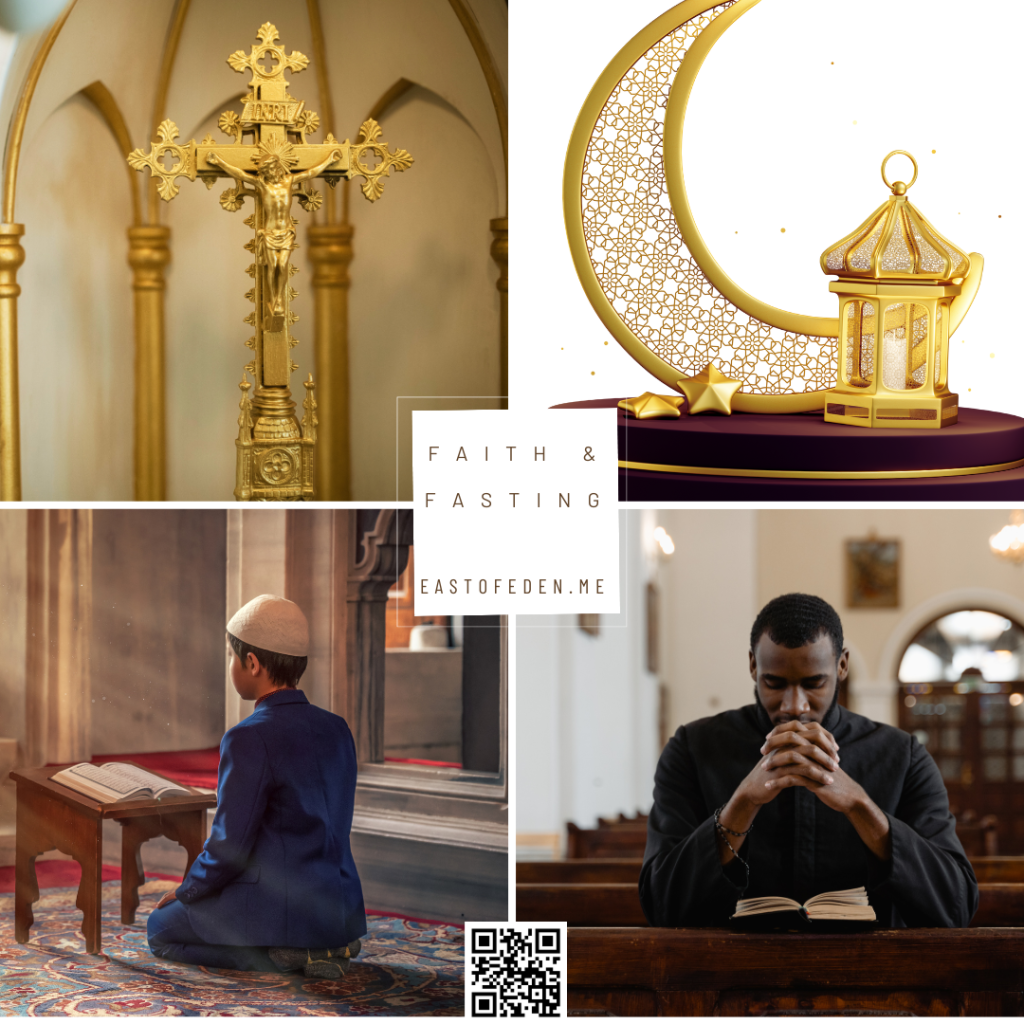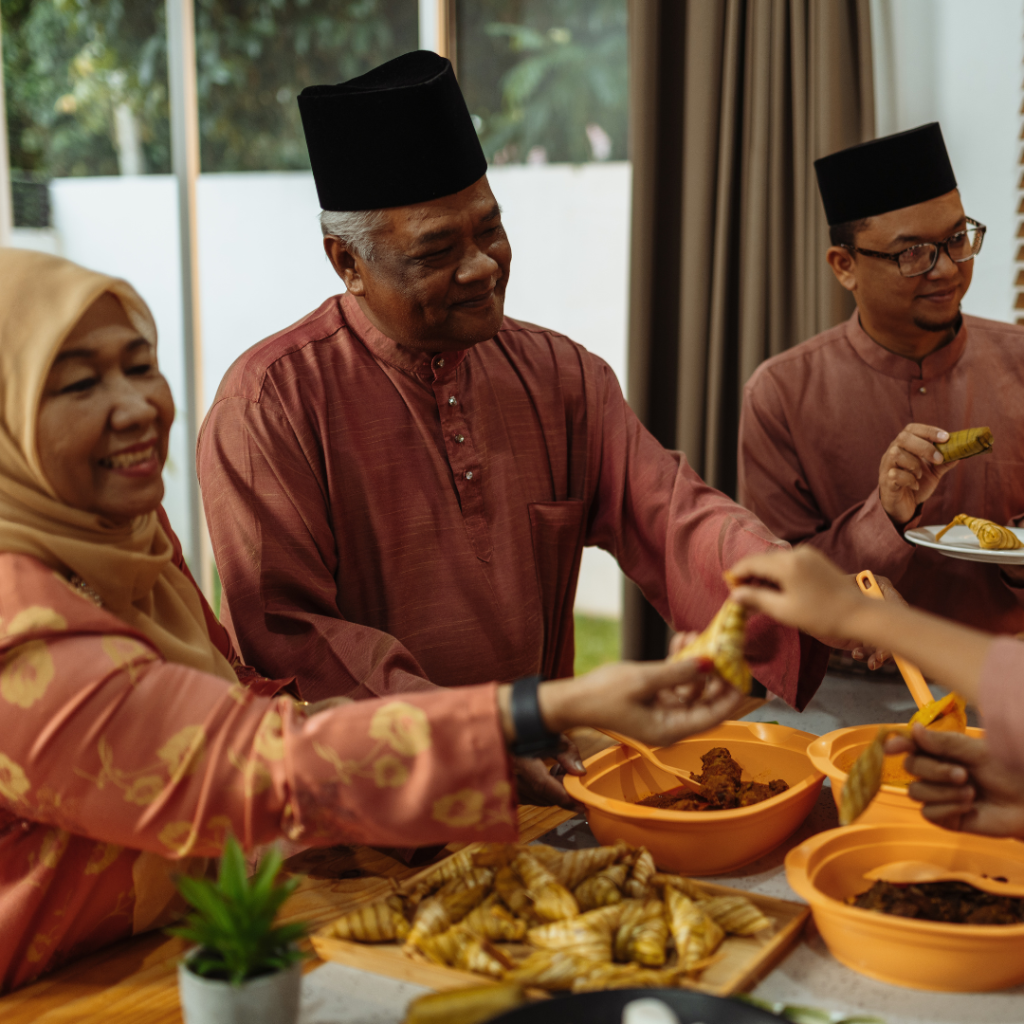Lent 2024, Day 23: Faith & Fasting.

From Ken Chitwood at Patheos, a look at how fasting and food play a big part for Christians and Muslims, and this year, how they coincide:
From the way we procure food to the way we prepare a meal; from the way we set the table to who sits with us; from what we consume to how we eat it — food customs and practices provide a veritable feast, as it were, about what people value and celebrate.
Or, as Sue McLaughlin, executive producer of the PBS series The Meaning of Food, put it: “Our attitudes, practices, and rituals around food are a window into our most basic beliefs about our world and ourselves.”
Whether believers are feasting or fasting, sourcing food or considering the ethics of climate justice, food (or the lack thereof) plays a central role in global religious traditions.
Take Ramadan and Lent for example. As a practicing Christian with Muslim friends in different parts of the world, I’ve often taken part in both fasting traditions. I fondly remember chatting with older members of my Southern Californian Lutheran congregation at midweek soup suppers held before evening devotional services. I recall foolishly planning a waterless walking tour in the heat of a Jordanian summer with friends, only to celebrate our stupidity with a Yemeni feast (and plenty of fluids) that evening. Or, waking up in a tent in Mexico and snarfing down three packages of Little Debbie’s Honey Buns one early Easter morning after fasting from food since Maundy Thursday.

The rumble of my gut, the slick feeling of sweat on my skin, the fondness felt between friends and bonding over a fast broken are all vivid memories of religious practices’ inherently embodied nature. Rather than being about disembodied beliefs and meanings derived from texts, theologies, and the discourses around them, religion is made up of a menagerie of material things — including, and especially, food.
Food matters.
While food and foodways are diverse, the basic processes of collection, cultivation, consumption, and other related practices around them are commonly shared. Nevertheless, the choices made between what to eat, and what not to eat, are wrapped up in culturally and affectively attuned sensations, taste buds, and the combinations and contradictions of foods that speak to culture and meaning, power and knowledge.
Regarding what we call “religion,” David Freidenreich wrote that food is a, “powerful medium” for its expression and transmission; one that is intimately related to the everyday practice of discovering who we are in relation to other people, places and things. Through food and fasting from it, individuals and communities make meaning, uphold and cross boundaries and seek the divine — they also ritualize, consume and avoid what they consider pure and impure in the context of worship and the everyday.
For students of religion, paying attention to food practices allows us to attend to the material and affective ways in which religious actors navigate the complexities of identity in a diverse world. That’s because food, as one of the things that engages our bodies, is part of the constellation of stuff that comprises what David Morgan calls religion’s “the material life.”
Thus, rather than solely studying texts and traditions, students of religion would do better to observe the foods ingested and not ingested, the sighs of satisfaction or the grunts of frustration at foods offered.
Religion and the rumble of guts.
Returning to Ramadan and Lent, we can see how examining religion with a focus on food makes “it possible to identify differences in [religious actors’] life realities and appreciate the plurality of their local forms of expression.”
Specifically, it helps us humanize Muslims, Christians and others, coming to appreciate their identities in alternate, more comprehensive ways. Unfortunately, when it comes to popular understandings of religion, there is still a tendency to focus on thoughts and beliefs, symbols and meaning, rather than on every day, embodied and embedded practices and material realities.

Returning to Ramadan and Lent, we can see how examining religion with a focus on food makes “it possible to identify differences in [religious actors’] life realities and appreciate the plurality of their local forms of expression.”
Specifically, it helps us humanize Muslims, Christians and others, coming to appreciate their identities in alternate, more comprehensive ways. Unfortunately, when it comes to popular understandings of religion, there is still a tendency to focus on thoughts and beliefs, symbols and meaning, rather than on every day, embodied and embedded practices and material realities.
Read the entire piece here.
